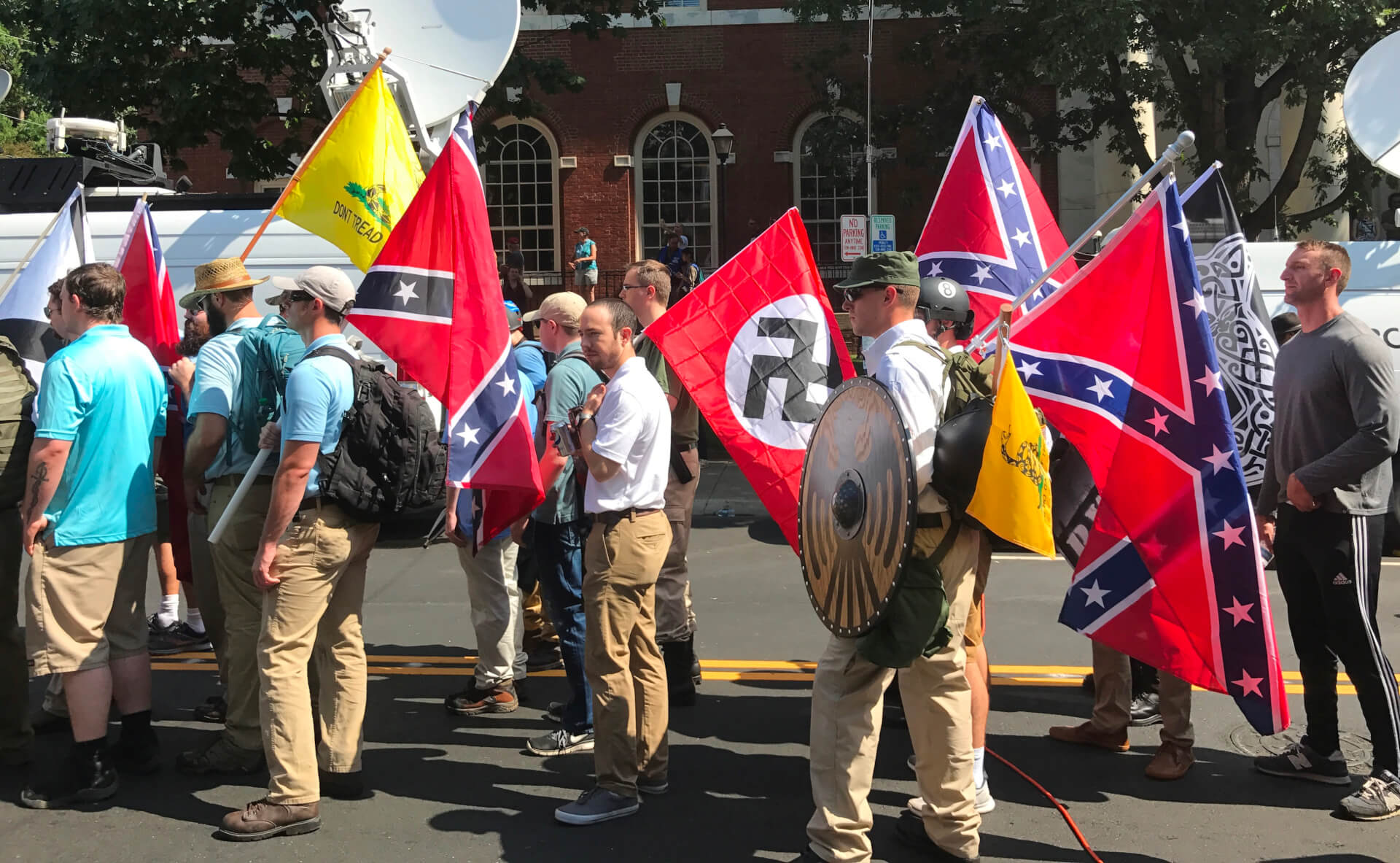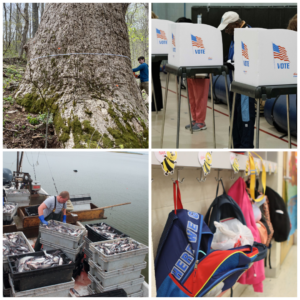6:01
News Story
Was last year’s rally in Charlottesville really protected speech? City may yet get an answer
The crowd hissed as a man with a full white beard and red MAGA hat approached the lectern to address Charlottesville City Council this week.
He said he condemned the hateful views expressed last year, but urged tolerance of opposing viewpoints, which he said people should be able to share without fear of violence or being shouted down.
His short speech was punctuated by heckling, but he was cut off entirely when he said he’d like to end his remarks with a quote from Thomas Jefferson.
The room erupted with loud groaning.
Mayor Nikuyah Walker tried to quiet the audience.
“Can we let him finish?”
More groans.
“Yes, we have to,” Walker said. “We’ve just been having this conversation. Did you understand what we’ve been talking about for over a year about the First Amendment?”
Someone yelled back: “Yeah, I don’t care.”
The short exchange was tame by Charlottesville City Council standards – meetings over the past year have been marked by raucous outburst and bickering. But it’s characteristic of a larger debate that’s been playing out in the city since violent white supremacists marched here last year, leaving dozens injured and a young counter protester, Heather Heyer, dead.
Debating the First Amendment and ‘civility’
Anti-racist activists in Charlottesville say they’re fed up with calls for civility as groups peddling violent hate speech cloak their rallies in the constitutional rhetoric of free speech, often framing their gatherings literally as “free speech rallies” rather than letting the speech itself — support for the KKK for instance — serve as the headliner.
And a year later, Charlottesville residents remain outraged that the city granted white supremacist groups a permit to hold their infamous Aug. 12 rally in the city.
“Activists had warned the city and the judge that these people were going to be violent, but again, free speech was used to protect their ability to be here,” said Ben Doherty, a law librarian at the University of Virginia, during a panel this week organized by anti-racist activists to discuss how “platitudes about free speech are used to undermine anti-racist work.”
The city did fight the permit, but only insomuch as it sought to change the location from a small downtown park to a much larger space where authorities believed it would be easier to manage crowds, noted another member of the panel, Kim Rolla, a lawyer at the Legal Aid Justice Center and member of the National Lawyers Guild.
They lost. A federal judge ruled the city wanted to make the move based on the content of the speech expected at the rally, not just concerns about the crowd size. The rally was allowed to proceed downtown and chaos ensued.
What the city didn’t do was make the argument that they shouldn’t allow the permit because the groups were threatening actual violence or their speech aimed to incite attendees to immediate violence.
Those are the grounds cited by activists, who note early and ample online evidence that the groups planned violence.

Courts may still decide whether rally was constitutionally protected
It’s probable that a judge or jury will still rule on whether that speech met the test to override constitutional protections — albeit well after the fact.
Rodney Smolla, a First Amendment expert and dean of Widener University Delaware Law School, said the question will likely be central in the handful of post-rally lawsuits victims have filed against rally organizers.
“Part of what’s going on in those cases is the plaintiffs are trying to demonstrate that text messages and postings on internet sites and other statements made in advance of the rally demonstrated an intention to harm people and therefore crossed the line,” Smolla said in a telephone interview.
“What they would say is ‘We just came to express our views and we know our views are contrary to what a lot of people think, but we never intended to threaten harm or violence.’”
He says it’s “quite possible” that the plaintiffs will be victorious.
“I’ve seen the posts and I’ve seen the language and we’ve also seen the violence that’s ensued at rallies like this around the country,” he said.
But whether that means the city could have been victorious in its legal efforts ahead of the rally is another question, he said. It all depends what evidence they had at the time.
“I think what they knew is it was intended to promote anger,” he said. “So that’s not the same thing as intending to promote harm.”
To Smolla, the most relevant legal precedent comes from a 2002 case filed by Planned Parenthood against an activist organization that listed addresses for abortion providers alongside wanted-style posters. Three of the doctors listed were killed.
The U.S. Court of Appeals for the 9th Circuit ruled the speech constituted a “true threat” and was not protected. The ruling found that although “advocating violence is protected, threatening a person with violence is not.”
To activists, the violent intent in Unite the Right was obvious. To them, the only question is whether city officials ignored warnings from residents or just failed to take them seriously enough.
“If I was able to get access to information this summer that violence was coming, it’s hard to imagine they didn’t have it,” Anne Coughlin, a UVA law professor who also spoke on the panel. “The evidence was clear.”
Our stories may be republished online or in print under Creative Commons license CC BY-NC-ND 4.0. We ask that you edit only for style or to shorten, provide proper attribution and link to our website. AP and Getty images may not be republished. Please see our republishing guidelines for use of any other photos and graphics.





